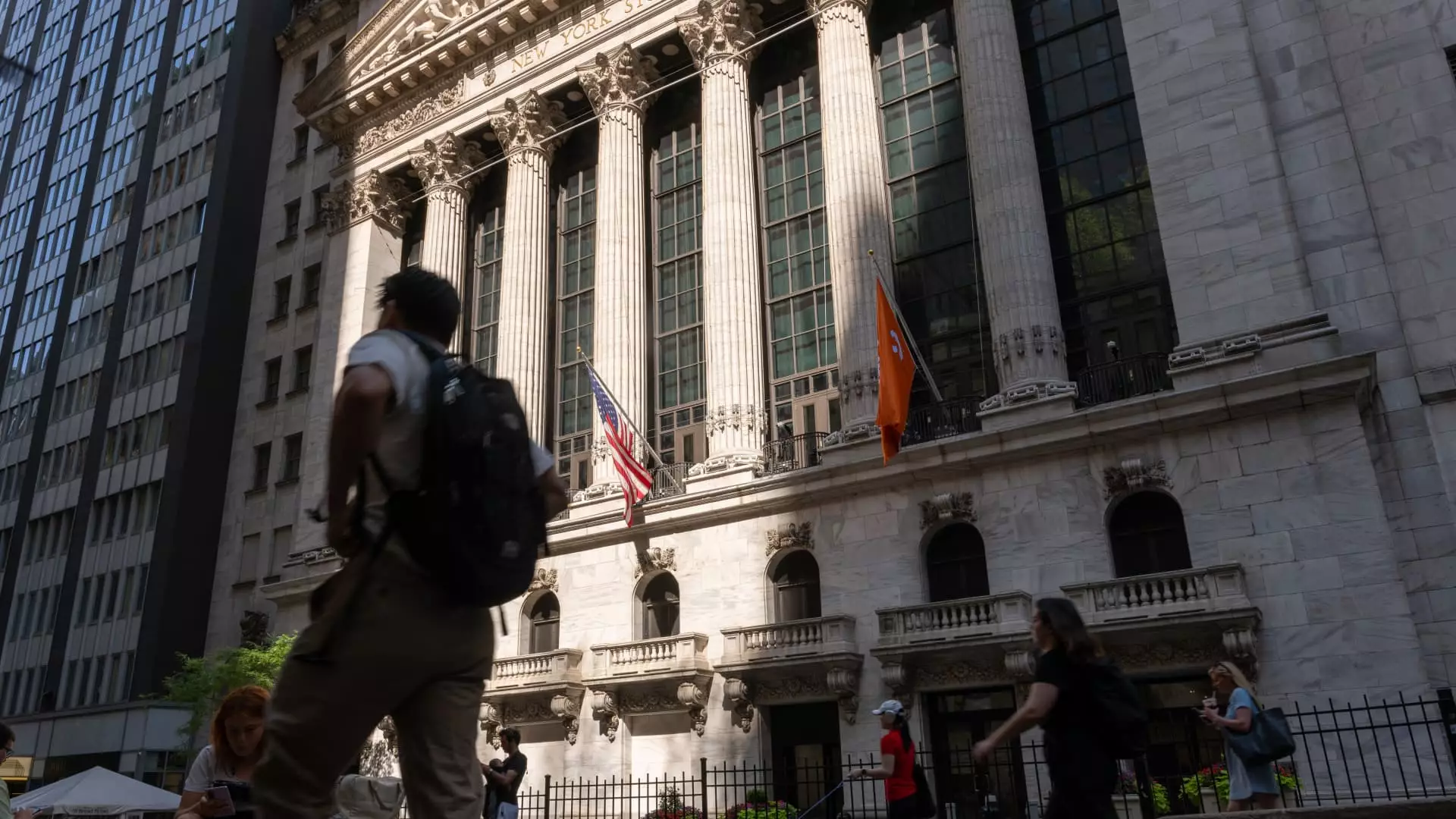The landscape of mergers and acquisitions (M&A) is a reflection of the broader economic sentiments of the times. With the recent ebbs and flows driven by Donald Trump’s administration’s controversial tariff policies, the M&A space has experienced a tumultuous journey, marked by both promise and peril. Initially, 2023 seemed poised for a strong resurgence in dealmaking, buoyed by a favorable business environment and eased inflation concerns. Yet, the sudden imposition of tariffs turned this optimism on its head, creating a volatile atmosphere that discouraged potential investors and dealmakers alike.
The stark decline in activity was palpable; in the first week of April, U.S. dealmaking slumped to a mere $9 billion, a staggering 66% decrease from the previous week. This sharp downturn is a warning shot of a fragile economy that is easily swayed by fluctuating government policies. Trump’s approach, while benefiting certain sectors, has shown to be a double-edged sword that could deter long-term investment. The global M&A market, similarly, felt the chill, with a week-over-week decline that underscores the interconnected nature of international finance and policy.
Conditional Optimism Amidst Recovery Signs
Despite these setbacks, there is a flicker of hope for a recovery in M&A activity. Recent weeks of improved clarity on trade policies have resulted in a rebound, with more sizable deals coming to fruition. The total value of U.S. deals jumped to over $227 billion in March, signaling resilience in the face of adversity. Analysts like Kevin Ketcham from Mergermarket express cautious optimism, attributing the rebound to stabilizing market sentiments and an eagerness to proceed with dealmaking, particularly in sectors like technology and telecommunications, which remain in high demand.
However, the road ahead remains fraught with challenges. The threat of rising interest rates looms large, casting a shadow over borrowing costs that could further suppress asset prices and create barriers to financing. Charles Corpening of West Lane Partners warns of a conditional recovery, emphasizing the importance of liquidity and market stability in nurturing a sustainable M&A environment. Special situations and smaller transactions, characterized by motivated sellers and adaptable deal structures, are likely to become more prevalent as companies adjust their strategies in response to a shifting economic backdrop.
Emerging Trends and Smaller Deals on the Horizon
While major deals have garnered headlines—like Google’s $32 billion acquisition and the $10 billion Walgreens-Sycamore Partners partnership—there’s a noticeable shift towards smaller transactions, reflecting a strategic pivot in corporate acquisition strategies. This trend hints at a more disciplined approach to dealmaking, where corporations like Kraft Heinz are considering divesting slower-growing brands or picking up promising contenders within their core areas.
This gradual adjustment amidst economic uncertainty suggests that companies are re-evaluating their positions and identifying potential growth areas. The case of PepsiCo acquiring Poppi for $1.95 billion is a prime example of this shift; it underscores a corporate mindset inclined towards strategic yet cautious expansions rather than reckless mergers designed purely for scale.
Interestingly, external regulatory influences—like the recent “poison pill” adoption by Victoria’s Secret—exemplify a defensive posture many companies are taking. Such moves are indicative of an awareness that the M&A landscape is not just about expansion but also about safeguarding one’s position in a climate of potential takeover threats. This creates an environment where organizations must be both opportunistic and vigilant.
A Balancing Act of Strategy and Stability
In this evolving landscape, companies are compelled to strike a balance between aggressive expansion and prudent governance. The ongoing geopolitical and economic uncertainty, amplified by fluctuating policies, suggests that the M&A frenzy witnessed in the past may not easily recur. Instead, strategic focus and flexibility will become paramount, as organizations navigate a world that is increasingly volatile and interconnected.
This journey through the realm of M&A, therefore, is not just about seizing opportunities but also about recognizing the landscape’s inherent risks. As companies prepare for the future, it is essential they remain grounded, drawing lessons from the past. The nuanced interplay of policy, market forces, and corporate strategy in this context will shape an uncertain, yet potentially rewarding, road ahead for M&A, challenging participants to not only anticipate but also adapt to the continuously evolving economic dynamics. The resilience of the M&A market will ultimately hinge on its ability to innovate and respond to the relentless tides of change, a lesson as vital as any financial calculation.

